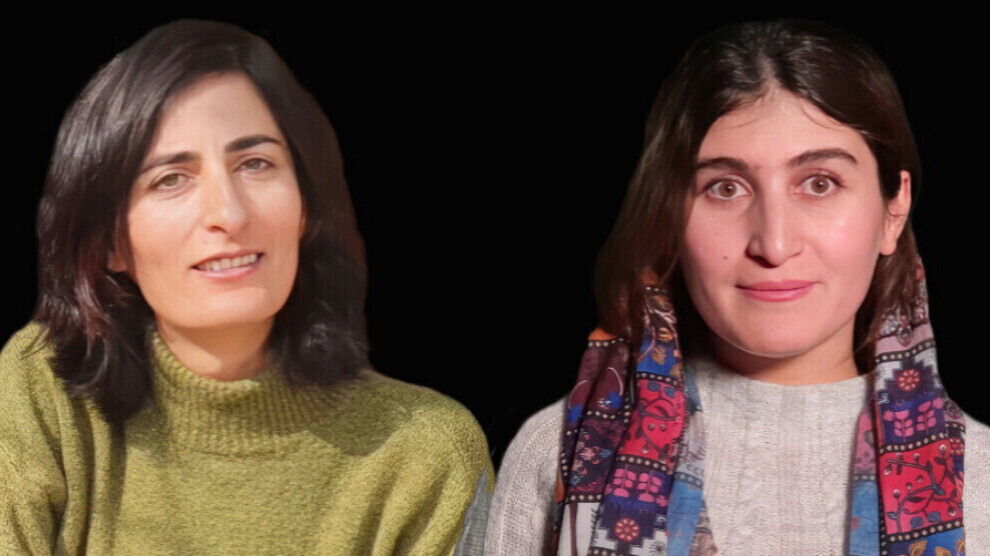From Gurbetelli Ersöz to Gülistan and Hêro
Gülistan Tara and Hêro Bahadîn were not merely journalists; they were fighters in the army of justice, wielding the weapons of knowledge, art, and profound thought.

EYLÜL RİZGAR*
On the battlefields, where bullets mark lines of control, other weapons emerge—no less lethal than guns: the camera that exposes lies, the pen that engraves the legend of resistance, and the will that refuses to break. Here, where truth itself becomes a battlefield, women stand as its guardians—undaunted by death, because their cause is too great to perish.
Gülistan Tara and Hêro Bahadîn were not merely journalists; they were fighters in the army of justice, wielding the weapons of knowledge, art, and deep thought. They became symbols of a struggle that defies the impossible, proving that the fiercest resistance is often waged by ideas against the darkness of ignorance.
They were not simply two journalists killed in an airstrike. Gülistan Tara and Hêro Bahadîn were the matured fruits of a long path of struggle, shaped by love of life, revolutionary thought, and profound sacrifice. They embodied the living spirit of a new woman who rejects chains and shapes her own destiny, walking the path paved by their comrade Gurbetelli Ersöz
Art as weapon, struggle as stage
Gülistan Tara wielded her camera not just with journalistic skill, but with the soul of a consummate artist. She loved theater, music, dance, and song—arts that dissolve the self and deepen the connection to beauty and humanity. She was an avid reader, exploring novels and historical narratives to uncover the roots of struggle and secrets of liberation.
This passion for life and beauty gave her resistance a deeper dimension; she fought for life in all its colors, not for an abstract idea.
Joining the guerrilla struggle in the mountains was not an escape from life, but the pinnacle of her devotion to it. There, where art becomes resistance and words turn into bullets, Gülistan found her greatest stage. She transformed her love of stories into reports chronicling her people’s struggle, and her sense of rhythm into images that pulsed with the heartbeat of Kurdish streets. Her camera became an extension of her artistic soul—a weapon that documented truth and defied erasure.
Thought as weapon, organization as revolution
Hêro Bahadîn carried a different kind of power—the force of deep ideological thought. Her journalism was never fleeting; it was grounded in study and the philosophy of freedom and women’s liberation. She understood the roots of oppression, and how to uproot them.
This intellectual depth drove her to unite women, not as scattered individuals, but as an organized, conscious force. She viewed women’s organization as essential: repression is systematic, so resistance must be equally structured. Her words, speeches, and writings became tools to build women’s collective self, activate their will, and transform them from passive subjects into active shapers of history. She was both thinker and leader, embodying the principle of “comrade” in its truest sense.
On the path of Gurbetelli Ersöz
Both women walked the path of their comrade Gurbetelli Ersöz, who through her martyrdom embodied the highest meanings of sacrifice for the cause. Their journey was not mere imitation, but a firm conviction that women’s and national freedom can only be won at a high price—and that the flame lit by Gurbetelli Ersöz must never be extinguished.
They represented different yet complementary forms of resistance: Gülistan led the cultural and artistic struggle, while Hêro carried the intellectual and organizational fight. Together, they formed a complete duo—the artist and the thinker, the reporter and the organizer, the woman who cherished life and the woman who gave hers for it.
Their martyrdom on August 23, 2024, was not an end but a crowning moment in a long journey of struggle, adding a new chapter to the epic of ‘the path of Gurbetelli Ersöz.’ This path now guides all who seek freedom, carrying Gülistan’s artistic spirit and Hêro’s intellectual resolve, keeping it illuminated until victory is achieved.
Gülistan and Hêro gave the most precious thing they had—their lives—in exchange for a truthful word, an image exposing the oppressor, and a vision of a future where the banner of freedom flies high. Their martyrdom on August 23, 2024, is not merely a date on the calendar—it is a scar on humanity’s forehead, a searing reminder that freedom is never a gift, but a right won through struggle, nourished by blood and immense sacrifice.
Their path was not paved with roses but marked by hardship and danger. Yet it remained the only road that could lead women to the gates of freedom. In their early departure, they condensed a lifetime of struggle into two chants that echo in every living heart: “Long live freedom… Long live freedom.”
*Member of Kongra Star Press Committee
